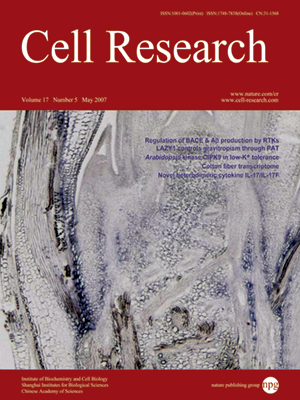
Volume 17, No 5, May 2007
ISSN: 1001-0602
EISSN: 1748-7838 2018
impact factor 17.848*
(Clarivate Analytics, 2019)
Volume 17 Issue 5, May 2007: 422-434
ORIGINAL ARTICLES
Gene expression and metabolite profiles of cotton fiber during cell elongation and secondary cell wall synthesis
Jin-Ying Gou1,2,3, Ling-Jian Wang1,2, Shuang-Ping Chen4, Wen-Li Hu1,2 and Xiao-Ya Chen1,2
11National Key Laboratory of Plant Molecular Genetics, Institute of Plant Physiology and Ecology, Shanghai Institutes for Biological Sciences, Chinese Academy of Sciences, 300 Fenglin Road, Shanghai 200032, China;
2CAS Center of Shanghai Chenshan Botanical Garden, 300 Fenglin Road, Shanghai 200032, China
3Graduate School of Chinese Academy of Sciences, Shanghai 200032, China
4Department of Computer Science and Technology, University of Science and Technology of China, Hefei 230026, China
Correspondence: Xiao-Ya Chen(xychen@sibs.ac.cn)
Cotton fibers elongate rapidly after initiation of elongation, eventually leading to the deposit of a large amount of cellulose. To reveal features of cotton fiber cells at the fast elongation and the secondary cell wall synthesis stages, we compared the respective transcriptomes and metabolite profiles. Comparative analysis of transcriptomes by cDNA array identified 633 genes that were differentially regulated during fiber development. Principal component analysis (PCA) using expressed genes as variables divided fiber samples into four groups, which are diagnostic of developmental stages. Similar grouping results are also found if we use non-polar or polar metabolites as variables for PCA of developing fibers. Auxin signaling, wall-loosening and lipid metabolism are highly active during fiber elongation, whereas cellulose biosynthesis is predominant and many other metabolic pathways are downregulated at the secondary cell wall synthesis stage. Transcript and metabolite profiles and enzyme activities are consistent in demonstrating a specialization process of cotton fiber development toward cellulose synthesis. These data demonstrate that cotton fiber cell at a certain stage has its own unique feature, and developmental stages of cotton fiber cells can be distinguished by their transcript and metabolite profiles. During the secondary cell wall synthesis stage, metabolic pathways are streamed into cellulose synthesis.
Cell Research (2007) 17:422-434 doi: 10.1038/sj.cr.7310150; published online 27 March 2007
FULL TEXT | PDF
Browse 2010


